"VR learners retain up to 80% of practical skills versus 20% from reading alone—a leap that will reshape Africa’s engineers."
Opening Insights: Reimagining Learning for Africa’s Next Engineers with VR
Imagine a world where a child doesn't just read about an engine but builds each component in real time—virtually. It’s not science fiction; this is the transformation happening across African classrooms today. With advances in virtual reality (VR), we are witnessing a shift from passive textbook learning to active, hands-on experimentation—a leap that could fuel the next generation of African engineers.
For decades, budding technologists struggled to bridge the gap between abstract diagrams and the tactile understanding needed for real invention. Then, enter VR: with VR headsets and simulators, students are now able to not just see, but interact with, complex machines piece by piece. Educators and technology leaders see this as a key to unlocking both knowledge retention and creative potential.
Why does this matter? Educational research shows VR learners retain up to 80% of practical skills—a staggering advantage over the traditional 20% reached by reading alone. In the dawning age of AI and engineering, this isn’t just about technology—it’s about sovereignty, dignity, and preparing a continent’s youth for an era where they invent, not just consume, technology.
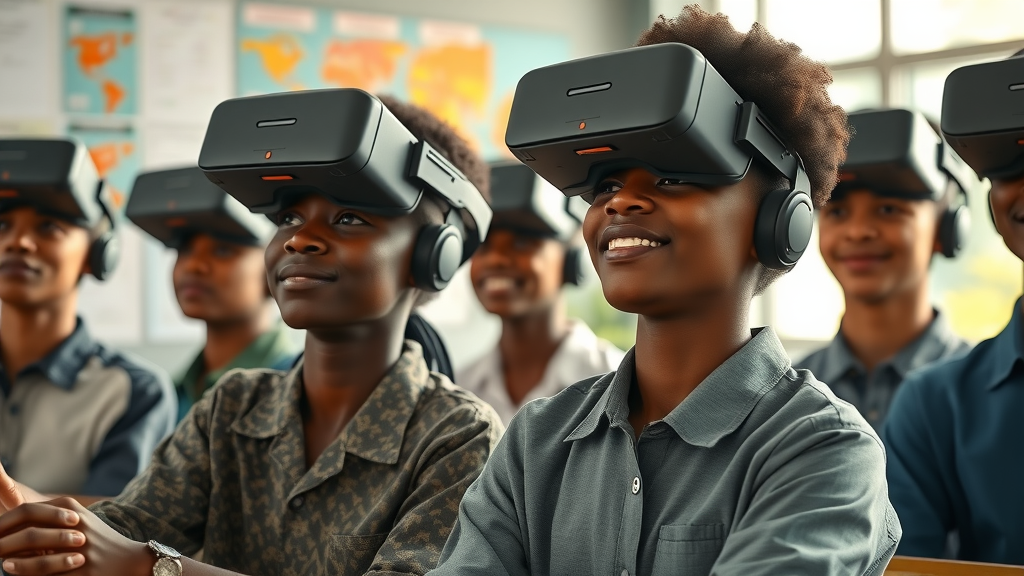
- What You'll Learn:
- The transformative ability of VR in practical STEM education, specifically in African classrooms
- How VR simulates real-world machinery assembly for visual and kinesthetic learners
- Ethical and technological considerations for implementing VR in Africa
- Tools, devices, and technologies essential for effective VR learning experiences
Scene One: A Student’s Struggle – From Textbook Confusion to VR Clarity

Let’s begin with a student struggling to visualise a motorcycle engine from a textbook. Deep in a modest classroom, the child’s brow furrows as they grapple with dense diagrams and complex terminology. This experience is all too common in African schools, where textbooks offer theory but rarely deliver practical understanding. The gulf widens as students, especially in STEM subjects, are expected to memorise intricate schematics without ever touching or assembling a real engine.
Now, picture this same child stepping into a VR simulator: equipped with a headset, they’re immediately immersed in a vibrant virtual workshop. Instead of endless pages, w visuals guide the student through the process, allowing them to assemble a motorcycle engine, piece by piece, right before their eyes. What seemed abstract now becomes tangible. They twist digital bolts, connect pistons, and fit gears—each movement reinforcing understanding in both hand and mind. The transformation is immediate: confusion fades, replaced by the confidence that comes from hands-on accomplishment.
Witnessing the gap: Traditional methods versus immersive VR for engine assembly
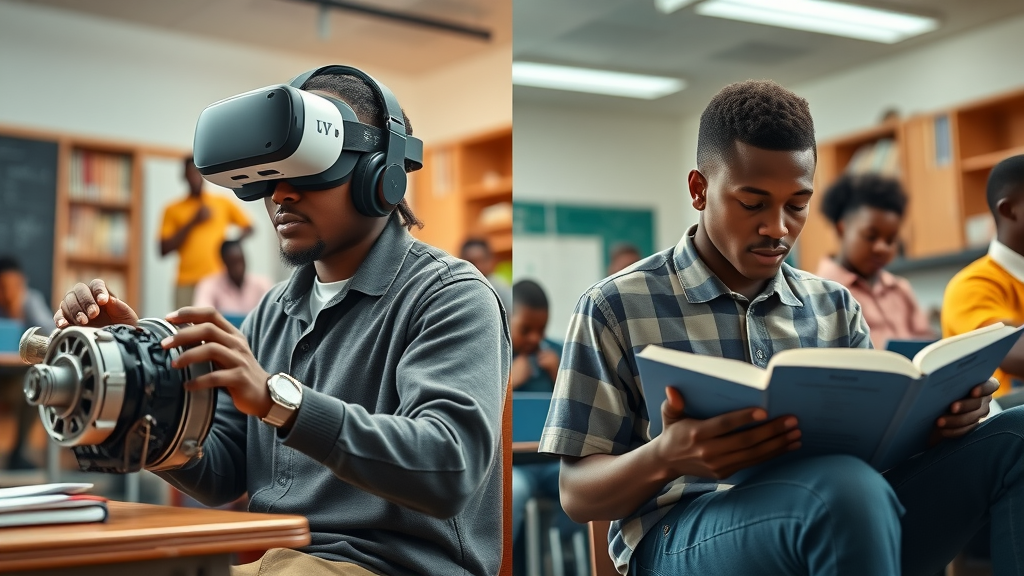
Traditional teaching often leaves many students behind, especially when the subject matter is intricate and mechanical. Reading from a textbook requires students to visualise endless diagrams and mechanical interactions, but this is a skill that not all possess or ever develop. In fact, a significant retention gap exists: students retain as little as 20% of practical skills through reading, easily forgetting what they’ve learned when faced with real-world challenges. Add the absence of actual parts to touch, and the result is predictable—disengagement, confusion, and ultimately, lack of confidence.
Now, contrast this with an immersive VR session. Students don VR headsets and enter a world where the engine’s every bolt and bearing can be manipulated. Here, abstract ideas are translated into physical actions through interactive, gamified learning. When students assemble engines virtually, they engage not only their minds but their senses—you can almost see the “aha” moments on their faces as they gain a practical, lasting grasp of core engineering principles. The energy in the digital classroom is palpable, a far cry from the collective glazed stare that greets dense textbooks. VR closes the gap between theory and practice, democratizing access to quality engineering education across the continent.
| Learning Method | Average Practical Skills Retained | Engagement Level | Accessibility Challenges |
|---|---|---|---|
| Textbooks | 20% | Low (passive learning) | High (language, resources) |
| VR Simulation | 80% | High (active, hands-on) | Moderate (initial tech investment) |
The Power of Visualization: Hands-On, Minds-On with VR Simulators in Africa
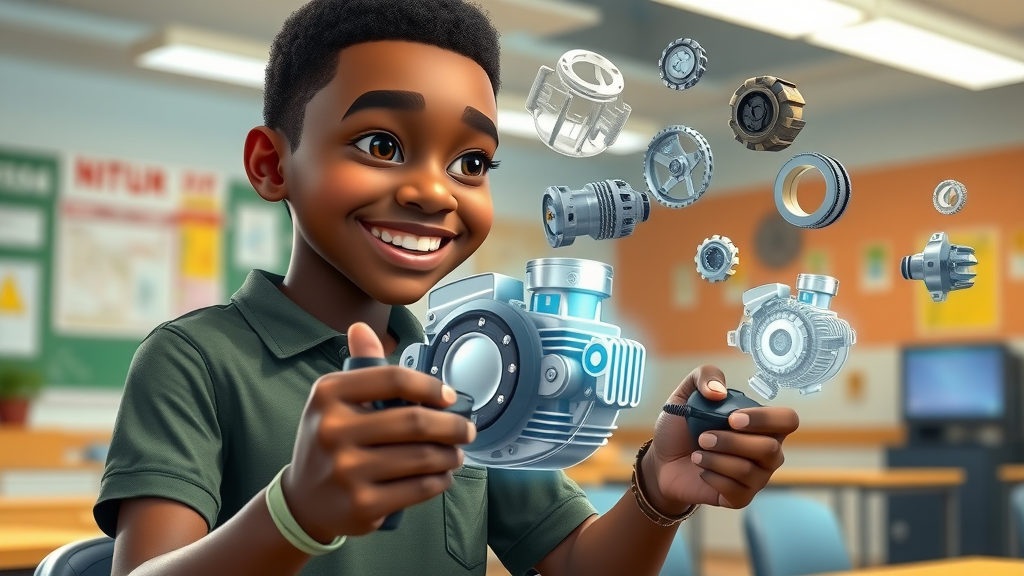
The heart of VR’s power lies in visualisation and active engagement. For African students, many of whom have never seen a real engine, VR offers the next-best thing: a virtual hands-on experience. Through well-designed simulators, students break down complex machines into their components and reassemble them—over and over—building muscle memory and insight in a way no static book ever could. This makes learning both accessible and meaningful for visual and kinesthetic learners.
Take, for instance, a class where each student is tasked with assembling a digital motorcycle. The VR experience transforms the daunting complexity of engine components into an interactive puzzle. As pistons snap into place and crankshafts spin in digital space, learners see the consequences of each decision in real time. VR’s “hands-on, minds-on” approach isn’t just about fun. It’s rigorously practical, supported by studies—students trained in VR labs demonstrate higher confidence and greater skill retention in real-world machine assembly, giving African youths a crucial competitive edge.
How VR enables complex machine assembly—piece by piece learning
Unlike traditional methods, VR allows for progressive learning by breaking down complex tasks into manageable steps. In a virtual lab, students interact with individual engine parts, connecting, adjusting, and even deconstructing them as many times as needed to understand functionality. Feedback is immediate—make a mistake, and the system guides correction; get it right, and a sense of accomplishment fuels further curiosity.
This piece-by-piece learning empowers students, particularly in under-resourced African communities, to experiment safely and without fear of costly failures. Each digital assembly trial boosts confidence, paving the way for students to come up with innovative solutions beyond textbook prescriptions. The VR engine isn’t just practice; it’s a launchpad for Africa’s engineers who will one day maintain solar fields, assemble critical infrastructure, and even author the continent’s next industrial breakthroughs.
"In VR labs, students are not just learning—they’re doing; virtual engines give life to theory."
Technology Behind the Transformation: Devices, Tools, and User Tracking
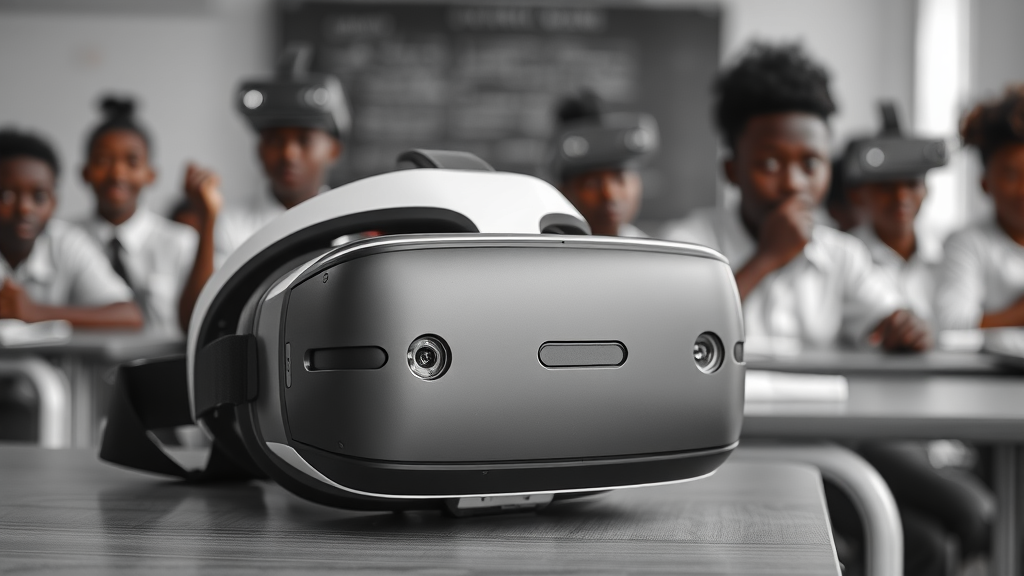
None of VR’s magic would be possible without the interplay of cutting-edge devices and software. Let’s demystify the tech: the most crucial hardware is the VR headset itself, designed to block out the user’s vision from the real world and create an all-encompassing digital environment. Students wearing these devices are fully immersed, able to focus and interact naturally as if the virtual object were real.
This immersion is deepened by motion controllers—handheld tools that let students pick up, rotate, and assemble virtual parts with remarkable accuracy. But the spectacle doesn’t end there: behind the scenes, high-powered graphics cards transform code into seamless, lifelike visuals, ensuring teaching materials are engaging and responsive. Meanwhile, positional tracking systems record every movement, allowing the VR world to respond dynamically to learning actions, keeping students connected to their tasks but free from real-world risks.
Which device is needed to experience VR and blocks out the users' vision from the real world?
To truly experience VR and shut out external distractions, students need a VR headset. These headsets, made by companies like Oculus, HTC, Sony, and others, envelop the eyes with dual high-resolution screens. The design blocks out real-world scenery, ensuring the learner’s only reality is the educational scenario before them. Thanks to built-in motion sensors and high refresh rates, African students can feel as though they’re physically inside the engine assembly room, enhancing focus, immersion, and learning outcomes. This device is the essential portal between theory and truly hands-on education.
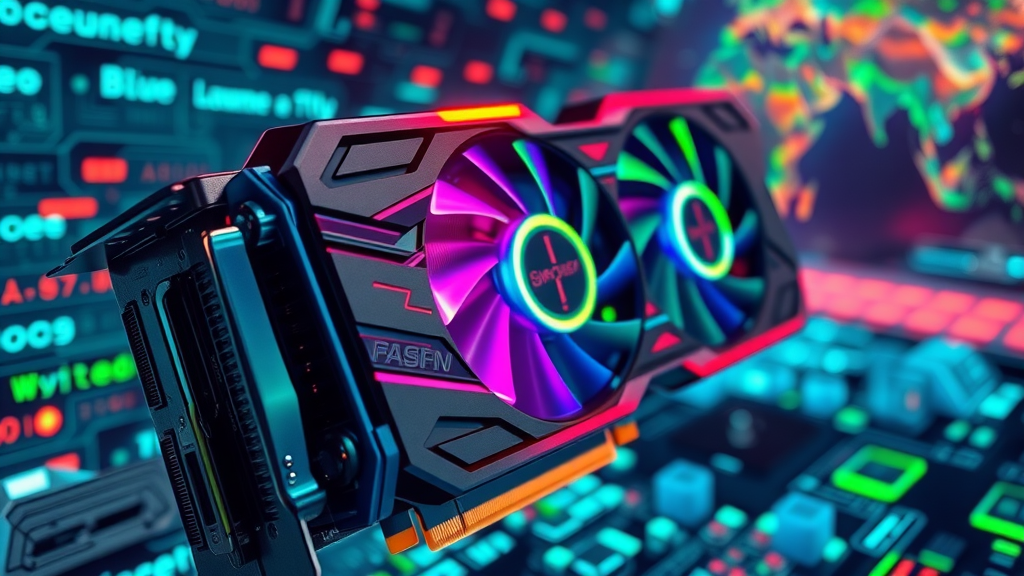
Which tool is best known for its graphical power in VR applications often used in AAA games?
The magic of VR visual fidelity comes from its engine—specifically, the graphics card (also known as the GPU). In both AAA gaming and high-powered simulation learning, GPUs like the NVIDIA GeForce RTX or AMD Radeon series are the recognised leaders. These components process vast amounts of data every second, rendering intricate, lifelike scenes that respond in real time to user interaction. For African classrooms, choosing VR systems equipped with robust graphics cards is essential. They ensure smooth operation, minimal lag, and the capability to simulate everything from delicate electronic assemblies to roaring motorcycle engines, fostering realism and engagement for every learner.
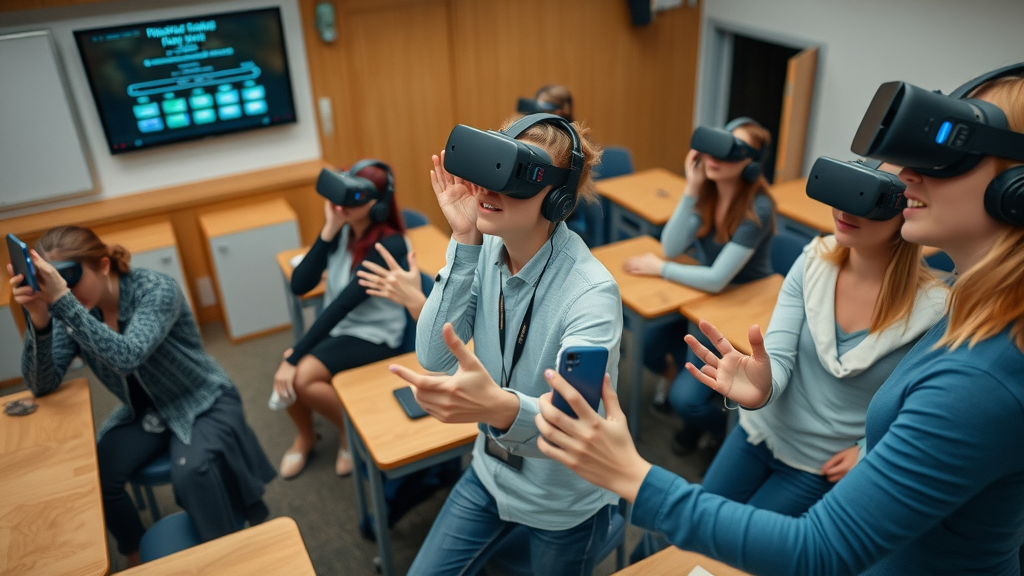
Which technology is often used in virtual reality VR to track the user's movement within a virtual environment?
Tracking student movement within the VR world relies on positional tracking technology. The two most common forms are inside-out tracking (using cameras on the headset itself) and external optical tracking (with classroom sensors). These technologies map head, hand, and even full body movements, transmitting real-time data back to the system so that every glance, gesture, and step is mirrored by a corresponding action in the virtual environment. For African classrooms, user tracking means that a student's intent—be it picking up a bolt or examining a schematic—translates seamlessly, making hands-on practice realistic and immersive, and further closing the gap between aspiration and ability.
VR’s Unique Benefits: Beyond Imagination, Into Innovation
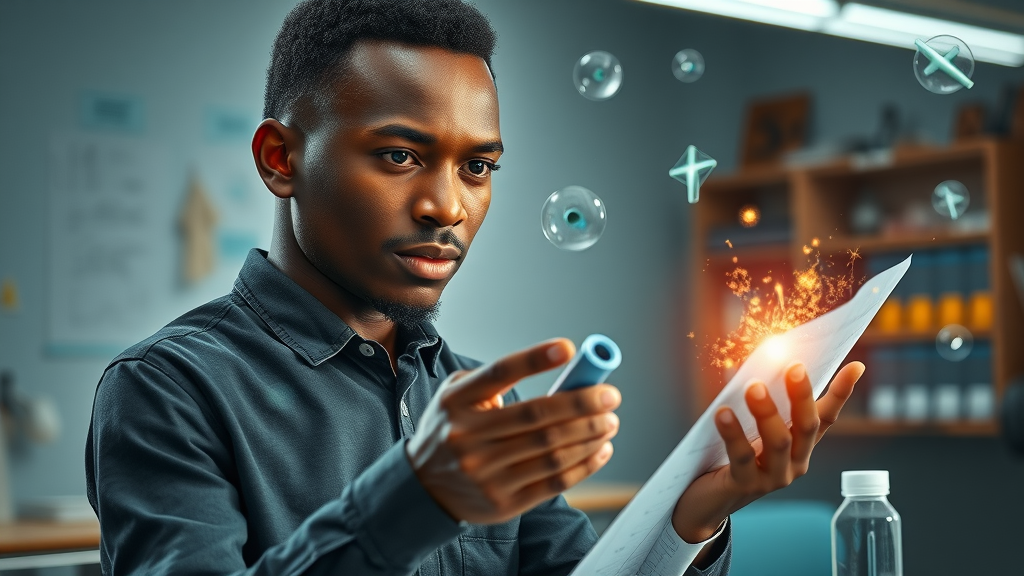
What does VR bring to learning that textbooks simply can’t? The simple answer is: possibility. VR enables experimentation where real-world risks, costs, or scarcity would otherwise forbid it. Students not only visualise but physically assemble, fail, and try again—without resource wastage or danger. Every mistake becomes a lesson; every correction, a step forward. In places where materials are hard to find or expensive, VR is the great equaliser, offering hands-on practice to every willing learner, regardless of location or economic status.
Moreover, VR enables customisable, context-rich modules—African educators can co-create content relevant to local curricula, industry demands, or cultural norms, ensuring that learning is never abstracted from real-world needs. Teachers see their students grow from passive listeners to active creators, developing not just knowledge but adaptability, ingenuity, and a genuine love for engineering.
What does VR bring to the learning experience that might otherwise not be possible?
VR delivers true immersion, instant feedback, and risk-free experimentation—three pillars not easily obtained in conventional learning environments. By giving learners the freedom to experiment with engine parts without fear of doing irreversible damage, VR encourages exploration, creativity, and confidence. Abstract theories are reinforced by tactile actions, while the system’s real-time prompts help correct errors gently, promoting resilience rather than frustration. Most importantly, this technology unlocks access for underserved communities, meaning the talent of an entire continent is no longer held back by a lack of expensive physical resources.
- VR learning advantages list:
- Increased knowledge retention
- Safe hands-on experimentation
- Accessibility for underserved communities
- Bridging the gap between theory and application
Animated walkthrough: A child interacting with a VR motorcycle engine in a virtual classroom
The Human Imperative: Ethics, Equity, and the 'Sovereign’s Code' in African VR Education
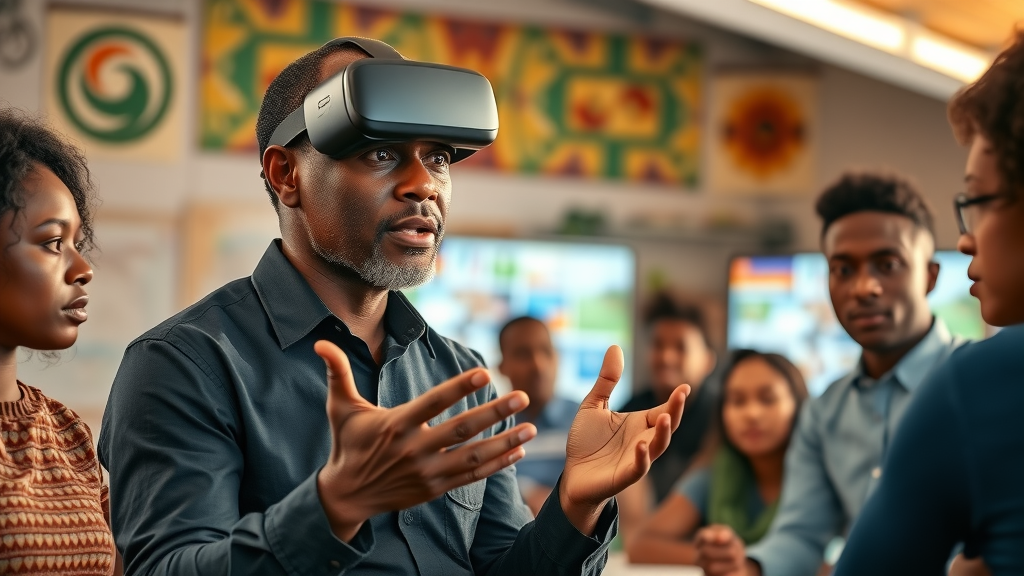
No technological innovation is neutral. As we introduce VR into classrooms, African educators, policymakers, and technologists must ensure these tools serve human-centred, ethical purposes. This is the heart of the "Sovereign’s Code"—the conviction that technology, especially in education, must advance social mobility, dignity, and sovereignty, never undermining local culture or values.
Ethical VR implementation goes beyond simply avoiding harm. It demands inclusivity: ensuring devices are accessible beyond elite urban schools, that data privacy is respected, and that students have the digital literacy to shape—not just consume—their digital future. As Africa accelerates into AI and VR-powered education, its leaders stand at a crossroads: build systems that empower, or risk replicating the exclusion and bias that global advances can so easily entrench. Let Africa’s VR classrooms be beacons of equitable, transformative change.
"Ethical AI and hands-on VR are the twin levers for social mobility and technological sovereignty in Africa."
FAQs: Future of Hands-On VR Learning in Africa
-
How accessible are VR devices in African urban and rural settings?
Accessibility is improving, especially in urban areas and tech hubs, where pilot VR classrooms have emerged through international partnerships and local innovators. However, rural schools still face challenges such as infrastructure, cost, and technical training. Efforts by NGOs and educational alliances are working to reduce these barriers, offering subsidised hardware packages and community training. With continued investment and policy support, VR's reach will expand further into underserved communities. -
What do educators need to integrate VR into classrooms ethically?
Beyond hardware and IT support, ethical VR integration in Africa requires teacher training, ongoing digital literacy programs, and curricular content that is both locally relevant and student-centred. Institutions should adopt the Sovereign’s Code approach—prioritising cultural sensitivity, equity of access, and transparency in how student data is used and protected. -
Are localised VR modules available to suit African curricula?
Yes, an increasing number of localised modules are being developed in partnership with African universities, ed-tech startups, and government educational bodies. These modules reflect local languages, industries, and contexts, ensuring that learning is immediately applicable and culturally resonant. Collaboration between educators and technologists remains vital for expanding and refining this content.
Key Takeaways: Building Engines, Building Futures
- VR multiplies skill retention and practical engagement for African youth.
- Actual assembly in VR fosters a creative, confident next generation of technologists.
- Technology must remain human-centred and ethically implemented.
Conclusion: The Age of Touch – VR as Africa’s Learning Revolution
"In a world remixed by AI and VR, knowledge doesn’t just belong in books; it lives in hands, minds, and hearts."
Invest in the Minds which Will Build the Future of Africa
-
Call to Action:
Discover Fanancial Fitness Fortunes Hub News – https://futurepreneurs.fanancialfitnessfortunes.com/hub-news - Subscribe: Architecting the Next Generation of Genius | Learning is the New Revolution: https://aiafricanews.com
Sources
- PwC - VR learners retain knowledge – https://www.pwc.com/us/en/industries/consulting/library/virtual-reality-study.html
- EdTech Magazine – How schools use VR – https://edtechmagazine.com/k12/article/2023/09/how-schools-use-vr-bridge-learning-gap
- UNICEF: AI & Education in Africa – https://www.unicef.org/esa/reports/ai-education-africa
- World Bank: Future of VR for African Classrooms – https://blogs.worldbank.org/education/future-learning-africa-virtual-reality-classrooms
Virtual reality (VR) is revolutionizing education across Africa by providing immersive, hands-on learning experiences that significantly enhance skill retention. For instance, the introduction of North Africa’s first VR CAVE at Tunisia’s Zarzis Smart Centre offers students interactive simulations for practical learning in fields like automotive and aeronautics. (stengg.com) Similarly, South African schools such as Reddam House Helderfontein and Reddam House Waterfall have integrated VR lessons, allowing students to virtually explore complex subjects, thereby improving comprehension and engagement. (futuresa.co.za) These initiatives demonstrate VR’s potential to transform education by bridging the gap between theoretical knowledge and practical application, preparing Africa’s next generation of engineers for real-world challenges.
 Add Row
Add Row  Add
Add 




Write A Comment